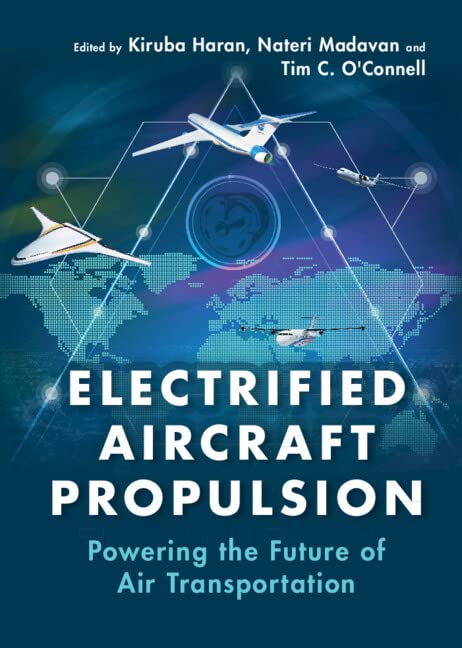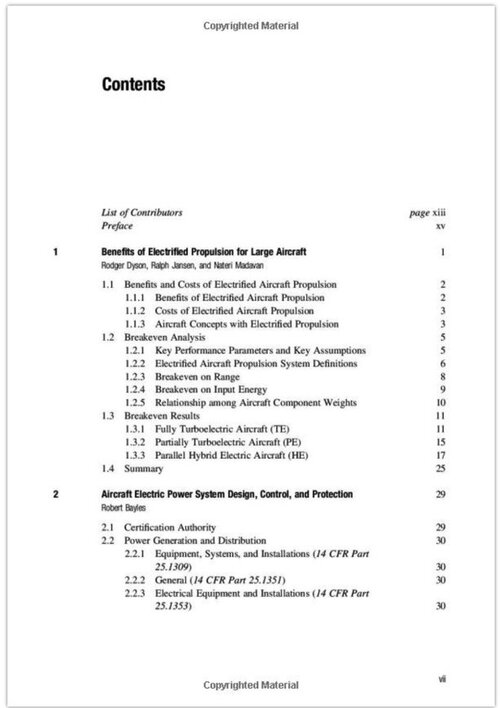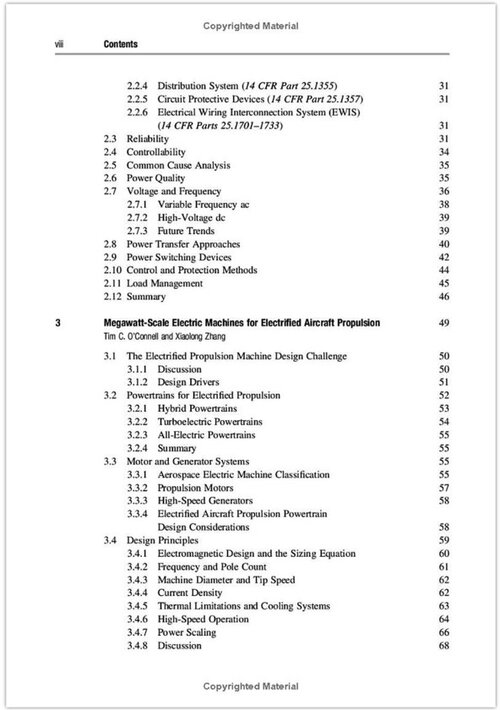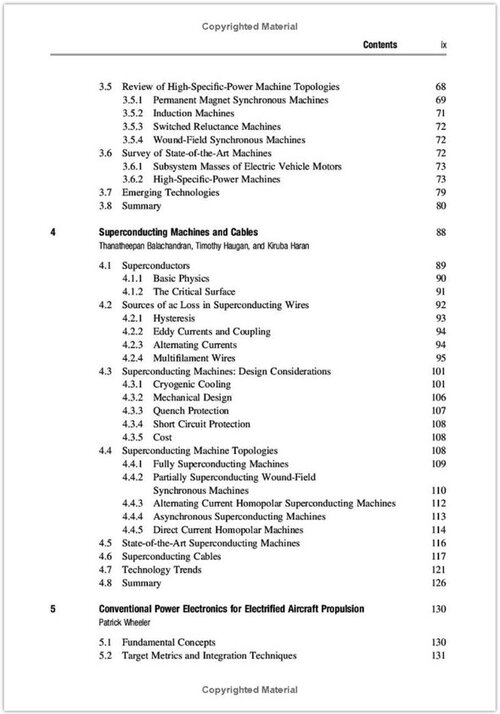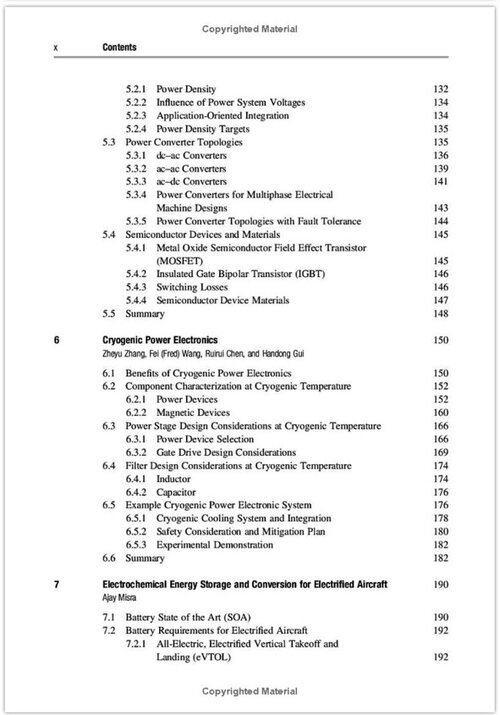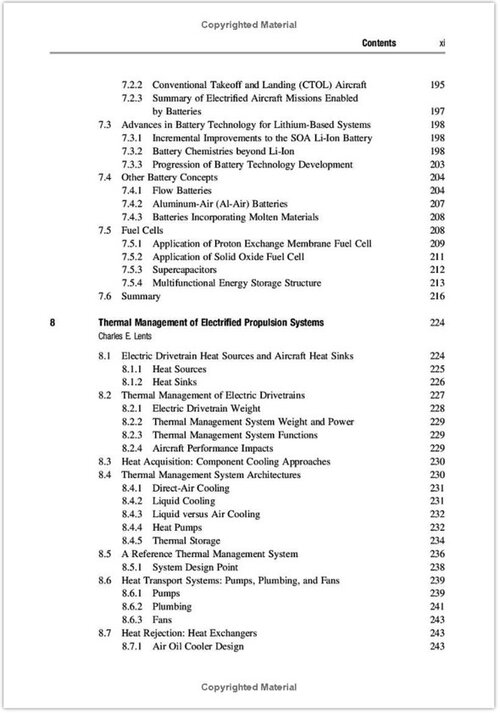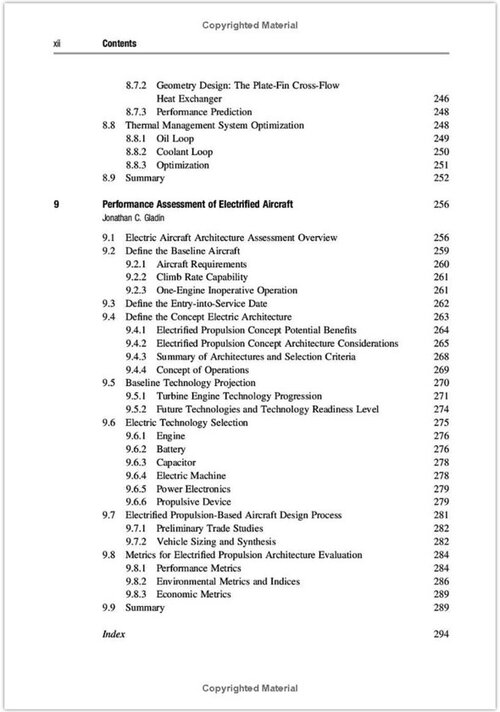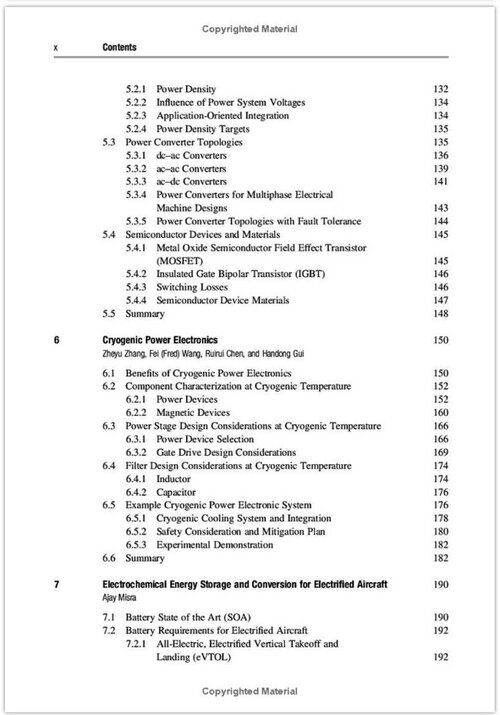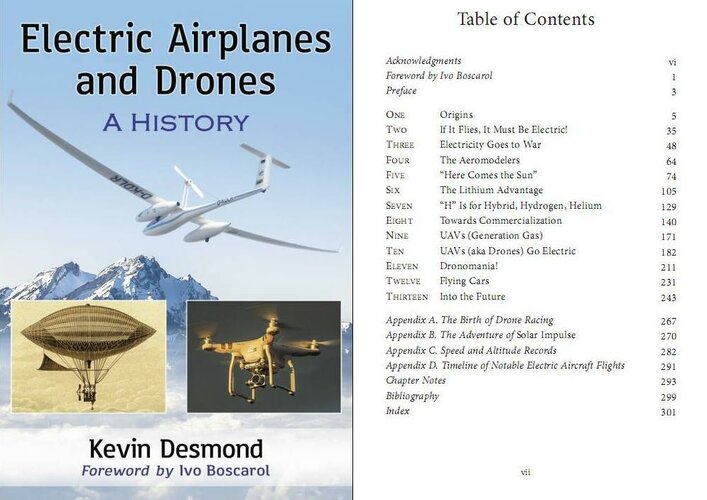Not that I'm aware of. This is the closest to anything like that:Didn't Australia just elect to use Pipistrel's Alpha Trainer, E-Version for it's basic flight trainer?
You are using an out of date browser. It may not display this or other websites correctly.
You should upgrade or use an alternative browser.
You should upgrade or use an alternative browser.
Electric and Hydrogen aeroplanes - feasibility and issues
- Thread starter Grey Havoc
- Start date
First ammonia-powered jet flight in 2023: A roadmap to clean aviation
The entire airline industry needs to wean itself off jet fuel over the next few decades – but it's still buying enormously expensive jet aircraft that are expected to keep bringing home the bacon for more than 20 years. Australian company Aviation H2 hopes to clean up commercial flight by…
Aviation will be disrupted from below by electric regional air mobility | illuminem
Electric vertical take off and landing air taxis dropping into urban vertiports — collectively urban air mobility or UAM — have taken up considerable space in headlines and investment circles, and have collectively lost over $21 billion in market capitalization, 77% of peak. Smart aviation...
alberchico
I really should change my personal text
- Joined
- 14 January 2014
- Messages
- 708
- Reaction score
- 1,514
"Current batteries are fit for purpose for 400-500 kilometer trips with 5-19 passengers, and in the coming decades will rapidly become viable for much longer journeys"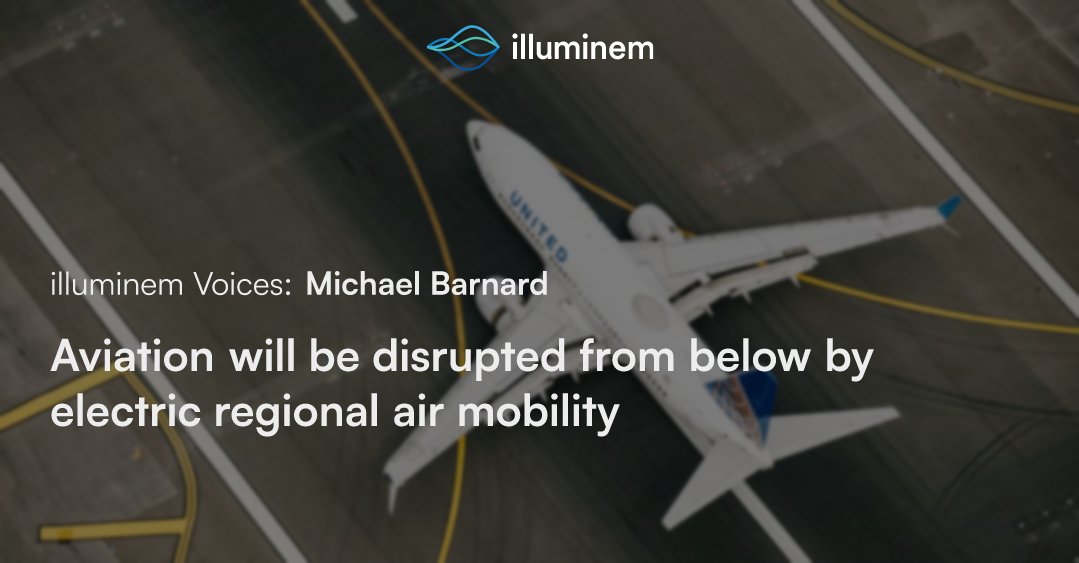
Aviation will be disrupted from below by electric regional air mobility | illuminem
Electric vertical take off and landing air taxis dropping into urban vertiports — collectively urban air mobility or UAM — have taken up considerable space in headlines and investment circles, and have collectively lost over $21 billion in market capitalization, 77% of peak. Smart aviation...illuminem.com
The big problem is that several of the startups building ambitious commuter planes like Eviation and Heart Aerospace jumped the gun by launching their projects too early. The battery density needed to produce a viable commuter plane is not there yet. So when they fail along with many of their fellow eVTOL companies it's going to scare investors away for years. Aviation Week had a good article on Magnix where they claimed that 90% of these electric aircraft startups would fail and the remaining 10% would struggle to attract funding because so many investors would be wary of getting burned again. It's basically the very light jet bubble of the early 2000's all over again. The only difference is that because there is much interest in sustainable aviation at the government level, some of these projects might be provided incentives or outright subsidies to continue to try to make their designs work. Personally I think we might end up seeing a hybrid or even a hydrogen powered airliner enter service before a regional electric aircraft. The Brazilians are currently working on a hybrid military transport. I could definitely see a civilian version without a cargo ramp being developed for airline use.

Embraer and the Brazilian Air Force present their hybrid propulsion military aircraft project.
On November 13 and during the National Defense Seminar offered by the Brazilian Ministry of Defense, Air Brigade Lieutenant Antonio Carlos Moretti Bermúdez, presented a project for a transport and cargo aircraft that is being developed jointly with Embraer. [youtube https://www.youtube.com/watch?v=N
Last edited:
- Joined
- 24 November 2008
- Messages
- 1,549
- Reaction score
- 2,612
Interview with Textron EAviation President, CEO... incl. Pipistrel
https://aviationweek.com/shownews/e...es-rob-scholl-textron-eaviation-president-ceoalberchico
I really should change my personal text
- Joined
- 14 January 2014
- Messages
- 708
- Reaction score
- 1,514
First ammonia-powered jet flight in 2023: A roadmap to clean aviation
The entire airline industry needs to wean itself off jet fuel over the next few decades – but it's still buying enormously expensive jet aircraft that are expected to keep bringing home the bacon for more than 20 years. Australian company Aviation H2 hopes to clean up commercial flight by…newatlas.com
YEEEESSSS !!!!!! WAY TO GO, FOLKS.
"Hydrogen gas is very light for the energy it holds and liquid hydrogen is a more compact form," Aviation H2 Director Christof Mayer tells us over a video chat.
"But the tanks are big and heavy. We certainly don't discount liquid hydrogen or any other form of hydrogen as an option. We're not shutting those down.
We're just going with ammonia for now. It's the simplest conversion, and that intrinsically will make it the most reliable, and that in itself makes it intrinsically the safest."
There are a few different ways to get the energy out of ammonia as electricity, but Aviation H2 has zeroed in on its potential as a combustion fuel.
With a few modifications, a regular jet engine can be converted to run on ammonia, eliminating all its carbon dioxide emissions in a way that doesn't throw the baby out with the bathwater.
The operation will be much faster and cheaper than a hydrogen fuel cell conversion, which would require you to throw out your perfectly good turbofan engines and replace them with electric motors, as well as gutting your fuel storage systems and putting in something radically different.
Bingo. We have winners here. That's the key: ammonia is the one and only no-carbon stuff that can replace kerosene without much modifications of basic airliners and their engines.
I can see a big problem however: range may be cut in half, as NH3 has half the energy contains of kerosene.
But remember, we presently have 12 000 miles+ range airliners, cutting that in half is not a big penalty to keep flying long range without screwing the biosphere...
Meanwhile, back in 1964... the US Army would like to try flying its UH-1 choppers and Buffalo transports, on NH3 - nuclear ammonia manufactured out of air's nitrogen and water's hydrogen...
Attachments
Last edited:
red admiral
ACCESS: Top Secret
- Joined
- 16 September 2006
- Messages
- 1,809
- Reaction score
- 2,389
klem
I really should change my personal text
- Joined
- 7 March 2015
- Messages
- 726
- Reaction score
- 1,633
Potential very relevant book:

Or we can also consult this one for the history and evolution of this field of aviation.
Attachments
- Joined
- 27 May 2008
- Messages
- 1,179
- Reaction score
- 2,485
Plenty of other issues with Ammonia
The U.K. Flyzero project was undertaken by a bunch of LH2 disciples, hence it’s highly bias. Unfortunately LH2 was the answer from the get-go in order to fit in with strategic A-team demands and so only good news was welcome.
The studies LH2 “findings” on things like the achievable range are nonsense in that they completely ignore the storage volume vs drag at useable CoG’s. I mean their proposal of sitting Pax on top of an LH2 tank when the cert rules demand the under fuselage structure providing crash shock absorbency by crushing in the event of a wheels up landing…what!.. it’ll never fly. Possibly unsurprising I guess from a group of people who haven’t designed a fuselage, but it’s not difficult finding these details.
Most sensible, certification compliant, LH2 aeroplane studies show ridiculously short ranges at very high take off mass;- due to divergent design requirements. The B team’s has got this right and is behind their “we’re not looking at LH2 because you can’t get a practical product” statement.
Plenty of other issues with Ammonia
The U.K. Flyzero project was undertaken by a bunch of LH2 disciples, hence it’s highly bias. Unfortunately LH2 was the answer from the get-go in order to fit in with strategic A-team demands and so only good news was welcome.
The studies LH2 “findings” on things like the achievable range are nonsense in that they completely ignore the storage volume vs drag at useable CoG’s. I mean their proposal of sitting Pax on top of an LH2 tank when the cert rules demand the under fuselage structure providing crash shock absorbency by crushing in the event of a wheels up landing…what!.. it’ll never fly. Possibly unsurprising I guess from a group of people who haven’t designed a fuselage, but it’s not difficult finding these details.
Most sensible, certification compliant, LH2 aeroplane studies show ridiculously short ranges at very high take off mass;- due to divergent design requirements. The B team’s has got this right and is behind their “we’re not looking at LH2 because you can’t get a practical product” statement.
Hydrogen density, temperature and explosivity are immense issues indeed. I can tell you the space program bit that bullet 60 years ago with Centaur and S-IV per lack of any other alternative - but they remain painfully aware every day that liquid hydrogen is a giant PITA to handle.
There are good reasons why Elon Musk rather pushed methalox to its upper limits (380 seconds isp) rather than going with hydrolox despite its 460 seconds specific impulse...
red admiral
ACCESS: Top Secret
- Joined
- 16 September 2006
- Messages
- 1,809
- Reaction score
- 2,389
The U.K. Flyzero project was undertaken by a bunch of LH2 disciples, hence it’s highly bias. Unfortunately LH2 was the answer from the get-go in order to fit in with strategic A-team demands and so only good news was welcome.
I agree. It doesn't stand up to scrutiny. Simply more subsidy for the major players to continue doing the same thing.
PtL SAFs appear to be the only feasible answer if we want to sustain the current approach. But this is a chemical engineering / scale -up / cost issue rather than aerospace (and then the solar power etc to provide the power).
I can't see how ammonia would be more dangerous than present day kerosene. The risks are different but overall, they match.
Bottom line: ammonia aircraft if handled proprely could have the same level of risk as kerosene ones. Temperature, toxicity, environment risk, explosivity... they are pretty close.
I mean, if you are dumb enough to try and drink kerosene, surely you die. Any stuff - even water - is dangerous if you play dumb with it.
But hydrogen ? temperature-wise, density-wise, explosivity-wise - it is much worse than kerosene. The risk is much higher at so many levels.
Where I readily agree is ammonia lack of energy compared to kerosene. That's a major issue for aviation and explains (together with the hydrogen LURE) why it was never atempted before - outside the documents I've linked.
Hydrogen in stark contrast is pure energy, there is no question about that - but storage and handling are absolute Hell. Do we really want to try that at airports ?
There is no clear workaround hydrogen ultra low temperature, nor dismal density.
Bottom line: ammonia aircraft if handled proprely could have the same level of risk as kerosene ones. Temperature, toxicity, environment risk, explosivity... they are pretty close.
I mean, if you are dumb enough to try and drink kerosene, surely you die. Any stuff - even water - is dangerous if you play dumb with it.
But hydrogen ? temperature-wise, density-wise, explosivity-wise - it is much worse than kerosene. The risk is much higher at so many levels.
Where I readily agree is ammonia lack of energy compared to kerosene. That's a major issue for aviation and explains (together with the hydrogen LURE) why it was never atempted before - outside the documents I've linked.
Hydrogen in stark contrast is pure energy, there is no question about that - but storage and handling are absolute Hell. Do we really want to try that at airports ?
There is no clear workaround hydrogen ultra low temperature, nor dismal density.
Last edited:
You know what ? I wish Airbus took one these birds (A350 ultra-mega-giga-super- long-range) and modify it to run on ammonia. Just to see how much range they could get out of it.
Instead of wasting their time on stupid and dangerous hydrogen.
I wonder if an ammonia-fueled A350-900 could fly at least 10 000 km ? It would be a brutally honest demonstration of what alternate fuel like ammonia can do - with no CO2 emissions, in passing.
Or maybe Boeing is just smarter there, and will pull out such a record flight with either a 777 or a 787 ?
Instead of wasting their time on stupid and dangerous hydrogen.
I wonder if an ammonia-fueled A350-900 could fly at least 10 000 km ? It would be a brutally honest demonstration of what alternate fuel like ammonia can do - with no CO2 emissions, in passing.
Or maybe Boeing is just smarter there, and will pull out such a record flight with either a 777 or a 787 ?
Last edited:
- Joined
- 27 May 2008
- Messages
- 1,179
- Reaction score
- 2,485
The hydrogen religion, …..words fail me.
10 years ago, Air Liquide committed to implementing the blue hydrogen initiative, 50% of its production would be carbon free by 2020. Over time, the marketing changed to carbon neutral, before it turned into the low carbon economy.
The result of all this fanfare is their latest project in Nevada USA, a hydrogen SMR plant that produces 30 tonnes per day but may also emit 270 tonnes of CO2 in the process. According to company representatives, this is considered sustainable.
How is this possible?
Air Liquide’s solution is a nonsense. Literally, landfill gas captured and processed through a traditional SMR unit. As a form of biogas, many regulatory agencies assign it with a minimal emission intensity if it’s preventing fugitive methane emissions. But if it’s replacing an existing renewable natural gas project (RNG), then there may be no additional benefit and the solution might be worse than the problem.
How are customers supposed to know?
At $250m, just the construction costs the equivalent of $2.5/kg. Assume feedstock at $8//Mcf ($8.3/MMBTU), it totals to be about $4/kg. On a heat basis, the hydrogen will cost $35/Mcf, on a transport basis it would cost freight companies double to switch from even today’s high diesel price. Seems a high premium considering it might be rubbish (garbage) that works but also could be rubbish (garbage) that doesn’t.
It gets worse;- California is counting on this project to fuel 40.000 of its fuel cell electric vehicles (FCEVs), as part of its "Clean Transportation Program" - source https://www.energy.ca.gov/sites/default/files/2021-12/CEC-600-2021-040.pdf
10 years ago, Air Liquide committed to implementing the blue hydrogen initiative, 50% of its production would be carbon free by 2020. Over time, the marketing changed to carbon neutral, before it turned into the low carbon economy.
The result of all this fanfare is their latest project in Nevada USA, a hydrogen SMR plant that produces 30 tonnes per day but may also emit 270 tonnes of CO2 in the process. According to company representatives, this is considered sustainable.
How is this possible?
Air Liquide’s solution is a nonsense. Literally, landfill gas captured and processed through a traditional SMR unit. As a form of biogas, many regulatory agencies assign it with a minimal emission intensity if it’s preventing fugitive methane emissions. But if it’s replacing an existing renewable natural gas project (RNG), then there may be no additional benefit and the solution might be worse than the problem.
How are customers supposed to know?
At $250m, just the construction costs the equivalent of $2.5/kg. Assume feedstock at $8//Mcf ($8.3/MMBTU), it totals to be about $4/kg. On a heat basis, the hydrogen will cost $35/Mcf, on a transport basis it would cost freight companies double to switch from even today’s high diesel price. Seems a high premium considering it might be rubbish (garbage) that works but also could be rubbish (garbage) that doesn’t.
It gets worse;- California is counting on this project to fuel 40.000 of its fuel cell electric vehicles (FCEVs), as part of its "Clean Transportation Program" - source https://www.energy.ca.gov/sites/default/files/2021-12/CEC-600-2021-040.pdf
Last edited:
To me nuclear - ammonia / air's nitrogen + water's hydrogen is the one and only way to go. Mixed with Tesla lithium-battery cars.
1- Go nuclear to combine nitrogen (from the air) with hydrogen (from the water) to get ammonia.
2-Hybrid cars: half-Tesla, half-ammonia hybrids.
What's wrong with that, really ??!!!
1- Go nuclear to combine nitrogen (from the air) with hydrogen (from the water) to get ammonia.
2-Hybrid cars: half-Tesla, half-ammonia hybrids.
What's wrong with that, really ??!!!
You have to understand that Fuel cells have not the same requirements as combustion. Airbus did demonstrate the viability of Fuel cells as an alternative to hydrazine APU (not yet $ wise).
All the art is in the process.Overall.
From solid ammonia to liquid there is as much engineering choice to be made that there is in making a 30t truck driven by Nicolas Cage as agile as an F-16.
All the art is in the process.Overall.
From solid ammonia to liquid there is as much engineering choice to be made that there is in making a 30t truck driven by Nicolas Cage as agile as an F-16.
Solid ammonia??? As long as it isn't binded by some extra stuff it is at any enviromental temperature allways a gas or liquid (at 10 bar). Producing ammonia is a well understood process
Ammonia in combustion engines works fine, for fuel cells you need additional effort to clean the hydrogene.
I totally agree, nuclear energy (plus some regenerative energy) and Ammonia is the only cost effective realistic option which can be applied in large scale.
Ammonia in combustion engines works fine, for fuel cells you need additional effort to clean the hydrogene.
I totally agree, nuclear energy (plus some regenerative energy) and Ammonia is the only cost effective realistic option which can be applied in large scale.
Solid ammonia??? As long as it isn't binded by some extra stuff it is at any enviromental temperature allways a gas or liquid (at 10 bar). Producing ammonia is a well understood process
Ammonia in combustion engines works fine, for fuel cells you need additional effort to clean the hydrogene.
I totally agree, nuclear energy (plus some regenerative energy) and Ammonia is the only cost effective realistic option which can be applied in large scale.

"I'm delighted to hear that".
I also think that aircraft will go the same way cars have gone, there might me room for one 'Tesla' style start up/first mover, but when batteries develop, the existing aircraft manufacturers will convert their existing models over to electric."Current batteries are fit for purpose for 400-500 kilometer trips with 5-19 passengers, and in the coming decades will rapidly become viable for much longer journeys"
Aviation will be disrupted from below by electric regional air mobility | illuminem
Electric vertical take off and landing air taxis dropping into urban vertiports — collectively urban air mobility or UAM — have taken up considerable space in headlines and investment circles, and have collectively lost over $21 billion in market capitalization, 77% of peak. Smart aviation...illuminem.com
The big problem is that several of the startups building ambitious commuter planes like Eviation and Heart Aerospace jumped the gun by launching their projects too early. The battery density needed to produce a viable commuter plane is not there yet. So when they fail along with many of their fellow eVTOL companies it's going to scare investors away for years. Aviation Week had a good article on Magnix where they claimed that 90% of these electric aircraft startups would fail and the remaining 10% would struggle to attract funding because so many investors would be wary of getting burned again. It's basically the very light jet bubble of the early 2000's all over again. The only difference is that because there is much interest in sustainable aviation at the government level, some of these projects might be provided incentives or outright subsidies to continue to try to make their designs work. Personally I think we might end up seeing a hybrid or even a hydrogen powered airliner enter service before a regional electric aircraft. The Brazilians are currently working on a hybrid military transport. I could definitely see a civilian version without a cargo ramp being developed for airline use.

Embraer and the Brazilian Air Force present their hybrid propulsion military aircraft project.
On November 13 and during the National Defense Seminar offered by the Brazilian Ministry of Defense, Air Brigade Lieutenant Antonio Carlos Moretti Bermúdez, presented a project for a transport and cargo aircraft that is being developed jointly with Embraer. [youtube https://www.youtube.com/watch?v=Nwww.aviacionline.com
Long term - maybe.the existing aircraft manufacturers will convert their existing models over to electric.
But the global warming emergency is definitively very short term, although commercial aviation is not, by far, the main contributor (Industry first, then cars - distant third at best).
Justified or not, if kerosene has to go away and in a hurry, the one and only straightforward alternative without massive modifications to both airports and airliners, is ammonia.
Second best seems to be methanol - it has carbon inside but it is tolerable because, unlike ammonia, it can be produced out of crops.
It is very much a matter of
- pure hydrogen (H2) is pure energy but a giant PITA to store
- so add either some C (carbon) or N (nitrogen)
- nitrogen with hydrogen NH3 - ammonia
- carbon with hydrogen - CH3OH - methanol
- it helps the storage
- unfortunately it ruins the energy contains
- and carbon is not exactly desirable...
- so that kind of leave ammonia, the nitrogen solution to hydrogen storage
Ammonia present manufacturing is, just like hydrogen, a global warming ticking bomb. That's why going nuclear would be better, and that's why I linked all these "Energy depots" papers.
What I would like to know, is, which kind of nuclear fission reactors would be the best for ammonia ? I kind of like MSR, but HTGR seems to be "hotter" to split the hydrogen out of water ?
Last edited:
I’m kind of uncomfortable with pebble bet reactors, the danger of burning Graphite shouldn’t be underestimated and the radioactive waste of these designs is a bigger issue than that of conventional designs. The Graphite gets radioactive and is difficult to store, also it will be nearly impossible to reprocess the fuel. I’m more into molten salt or liquid metal cooled designs. I’m not sure whether liquid metal can provide enough temperature for splitting the water, is so, it would be a much better solution.
BTW. Methanol or Methan can also be produced by Hydrogene plus CO2 from Biogas production or direct air capturing. Of course, direct air capturing will limit the total efficiency, but as you might see here, it is ot totally unfeasable:
BTW. Methanol or Methan can also be produced by Hydrogene plus CO2 from Biogas production or direct air capturing. Of course, direct air capturing will limit the total efficiency, but as you might see here, it is ot totally unfeasable:
- Joined
- 27 May 2008
- Messages
- 1,179
- Reaction score
- 2,485
"Current batteries are fit for purpose for 400-500 kilometer trips with 5-19 passengers, and in the coming decades will rapidly become viable for much longer journeys"
Not even close I’m afraid, they’ll struggle to get 100-200km for just 5 pax in the real world. The chap that wrote this article has a vested interest in promoting ultra optimism and this is the type of article which is miss-leading the whole sector.
but when batteries develop, the existing aircraft manufacturers will convert their existing models over to electric.
The lightest and most power dense batteries that exist today are made from the lightest solid known to man that can only give up one electron;- the technology is firmly wedged in a corner. All the pundit battery development predictions from the last 5-7 years have proven to be hopelessly wrong (the self proclaimed “technology strategist” that wrote the above article is one these;- I’ve seen a few of his previous predictions ). Why are people clinging to the belief that batteries are going to get significantly better?
Converting existing products is a non starter, just about every aspect of a conventional IC aeroplane is wrong for battery electric.
Last edited:
I’m kind of uncomfortable with pebble bet reactors, the danger of burning Graphite shouldn’t be underestimated and the radioactive waste of these designs is a bigger issue than that of conventional designs. The Graphite gets radioactive and is difficult to store, also it will be nearly impossible to reprocess the fuel. I’m more into molten salt or liquid metal cooled designs. I’m not sure whether liquid metal can provide enough temperature for splitting the water, is so, it would be a much better solution.
BTW. Methanol or Methan can also be produced by Hydrogene plus CO2 from Biogas production or direct air capturing. Of course, direct air capturing will limit the total efficiency, but as you might see here, it is ot totally unfeasable:
Not a great fan of pebble bed reactors either... but maybe it's because I'm a space nerd and have heard truly horrible things about Timberwind.
To clarify, I said 'when'. I'm aware that developments have been slow in batteries, but at some point there may be some progress."Current batteries are fit for purpose for 400-500 kilometer trips with 5-19 passengers, and in the coming decades will rapidly become viable for much longer journeys"
Not even close I’m afraid, they’ll struggle to get 100-200km for just 5 pax in the real world. The chap that wrote this article has a vested interest in promoting ultra optimism and this is the type of article which is miss-leading the whole sector.
but when batteries develop, the existing aircraft manufacturers will convert their existing models over to electric.
The lightest and most power dense batteries that exist today are made from the least dense solid known to man that can only give up one electron;- the technology is firmly wedged in a corner. All the pundit battery development predictions from the last 5-7 years have proven to be hopelessly wrong (the self proclaimed “technology strategist” that wrote the above article is one these;- I’ve seen a few of his previous predictions ). Why are people clinging to batteries are going to get significantly better?
Converting existing products is a non starter, just about every aspect of a conventional IC aeroplane is wrong for battery electric.
Regarding existing manufacturers, I mean, they will switch production over. In theory they will need new designs, but taking cars as an example, whilst the first models were clean sheet designs, like Tesla, Jaguar, a lot of the recent models are IC with battery modules literally dotted throughout the vehicle, such as this one from Vauxhall:
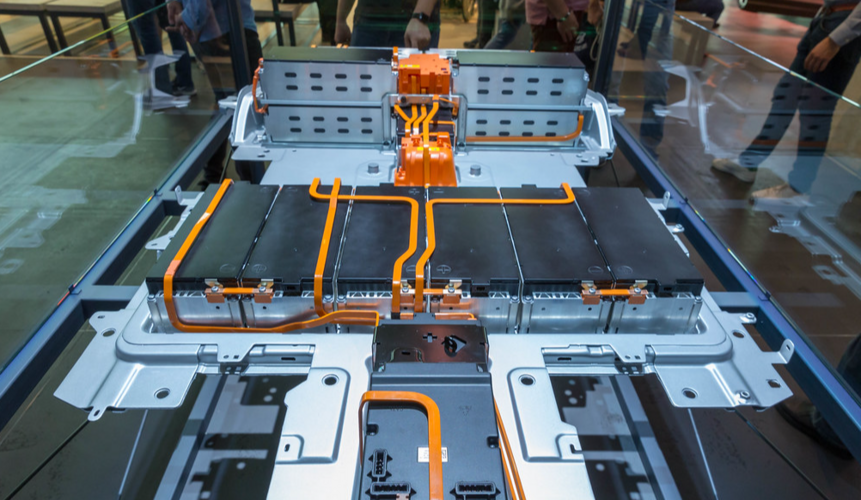
Decarbonization Prize Targets 100th Anniversary Of Lindbergh Flight | Aviation Week Network
With aviation facing a growing sustainability challenge, the Lindbergh Foundation and XPrize Foundation have come together to launch the Forever Flight Alliance. Their goal is to accelerate the decarbonization of aviation through incentive prizes.
alberchico
I really should change my personal text
- Joined
- 14 January 2014
- Messages
- 708
- Reaction score
- 1,514

Vaeridion to build 11-seater electric aircraft - electrive.com
The start-up Vaeridion from Munich wants to build small electric aircraft with space for two pilots and nine passengers. In contrast to the numerous electric vertical take-off concepts, Vaeridion's electric aircraft is designed to take off and land like an ordinary aeroplane. The plans are still
Another new entrant in the 11 seat commuter market. At least they're being realistic with their estimated 2030 EIS date.
Interesting - somewhat aimed at the Cessna 208 Caravan market though it may wish to change the fuselage to offer more utility factors if that is the case.


red admiral
ACCESS: Top Secret
- Joined
- 16 September 2006
- Messages
- 1,809
- Reaction score
- 2,389
Everyone knows that electric power means you don't have to bother about view over the nose requirements any more...
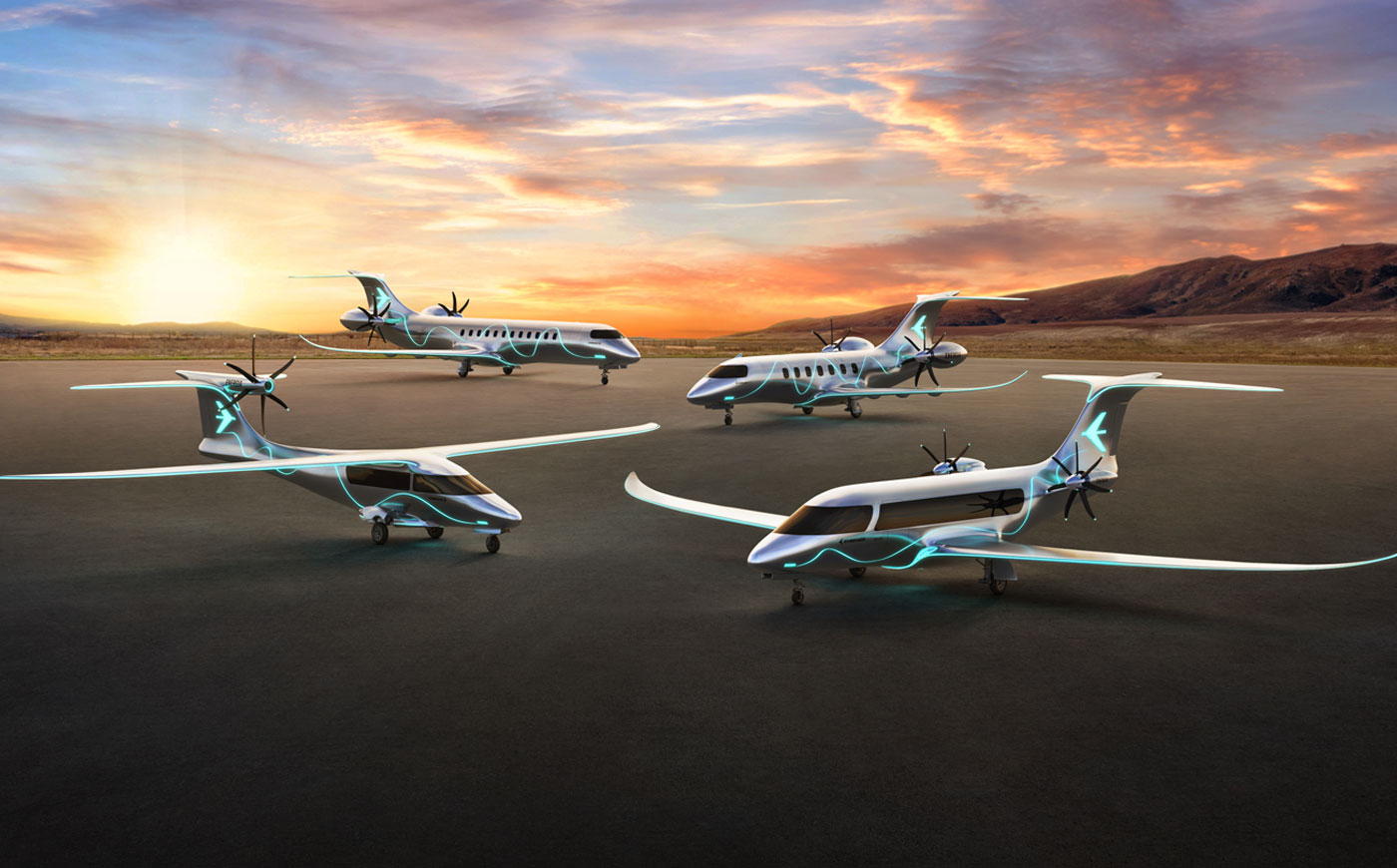
Sustainability in action – Embraer’s roadmap for a greener future - Embraer
Embraer is leading the way with its sustainability roadmap and concepts development plan, announced at the end of 2021.
alberchico
I really should change my personal text
- Joined
- 14 January 2014
- Messages
- 708
- Reaction score
- 1,514
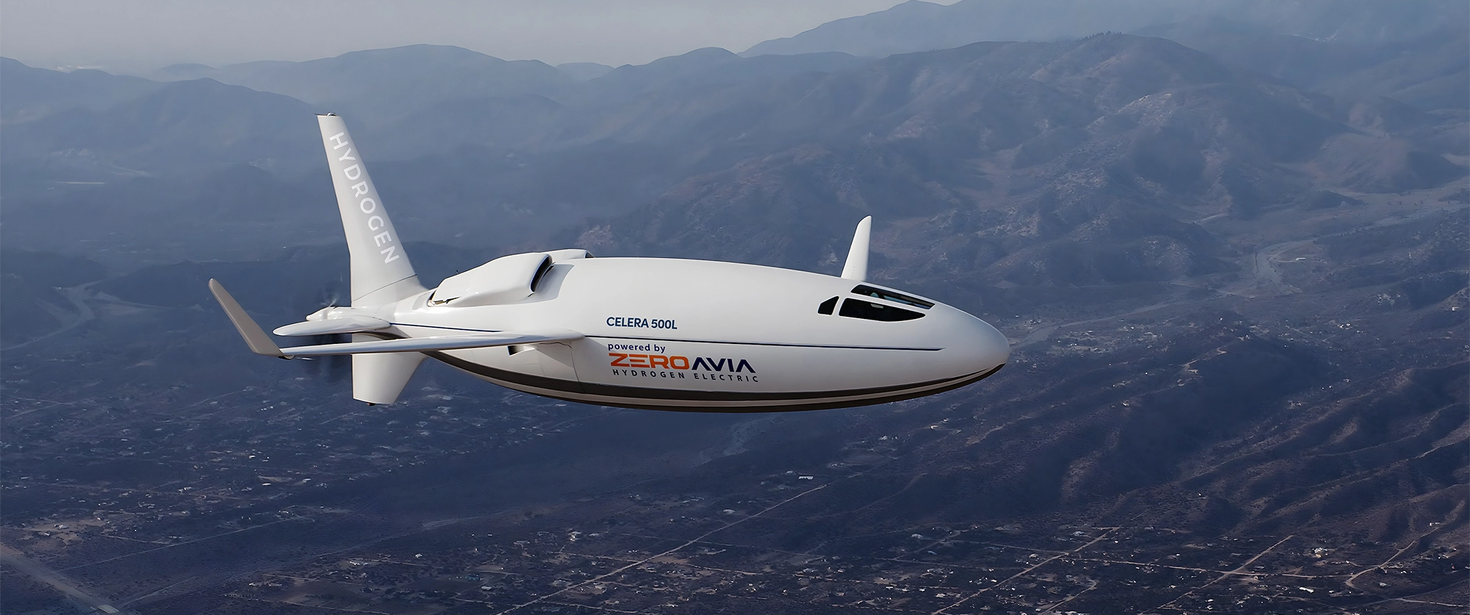
ZeroAvia & Otto Aviation Partner to Deliver First New Airframe Design with Hydrogen-Electric Engine Option - ZeroAvia
Leading zero-emission aviation pioneer ZeroAvia to optimize fuel cell-powered electric propulsion systems for Otto’s novel aircraft ...
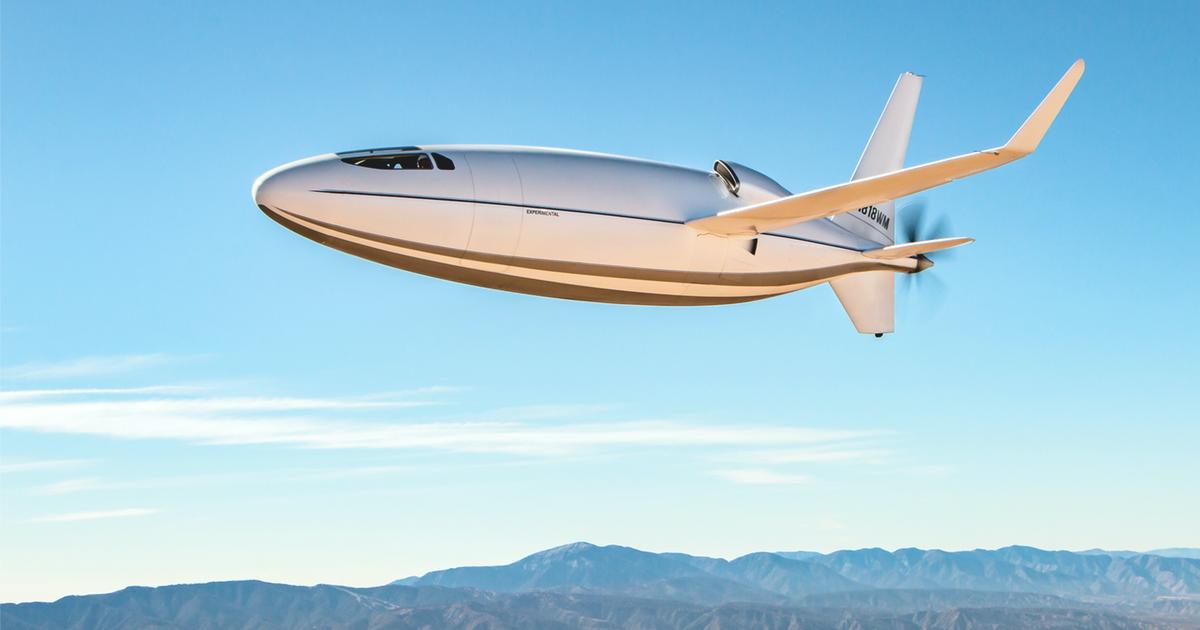
World's most efficient passenger plane gets hydrogen powertrain
The Celera 500L is a truly remarkable design. Otto Aviation says its odd shape delivers an astonishing 59 percent reduction in drag, and a massive leap in efficiency and range compared to traditional plane geometries. Arguably, this thing should've been electric from the get-go, so it's a…
I was wondering what happened to this project. Looks like this unique aircraft will be integrated with a hydrogen electric propulsion system.
Last edited:
alberchico
I really should change my personal text
- Joined
- 14 January 2014
- Messages
- 708
- Reaction score
- 1,514
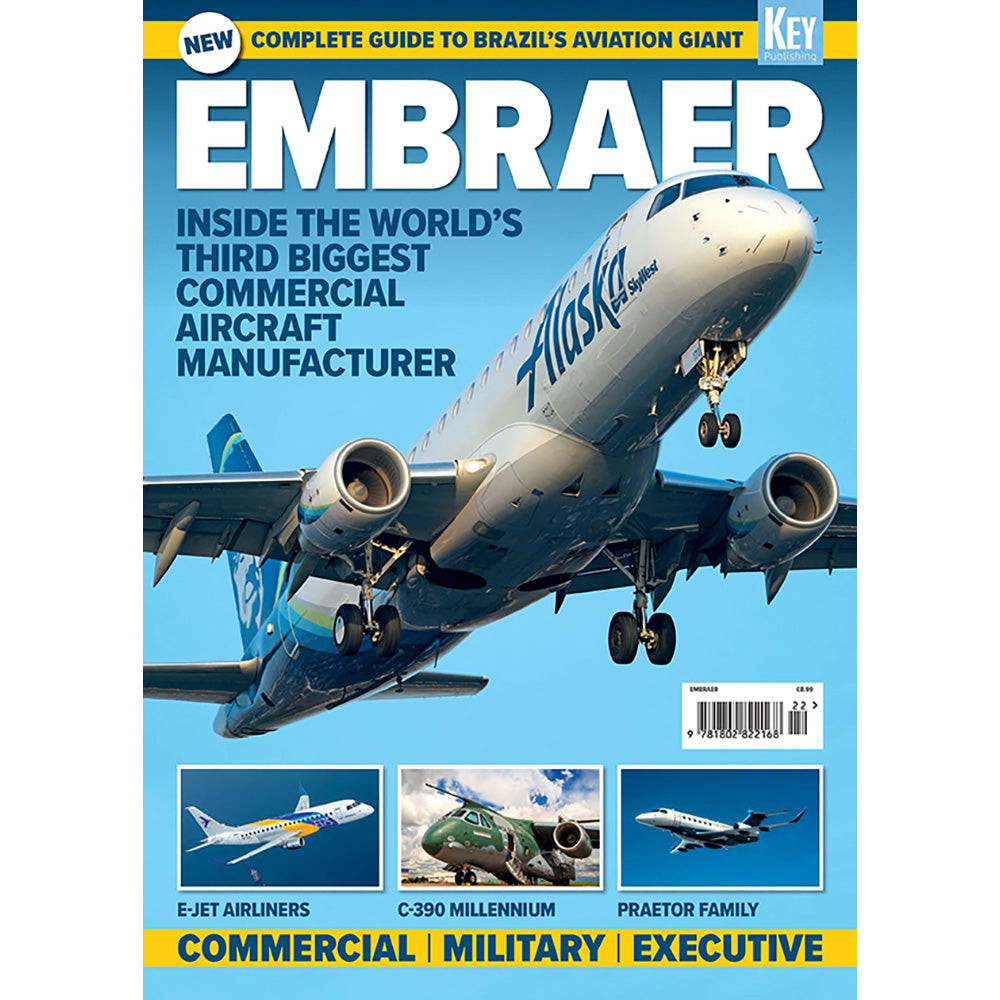
Embraer Commercial jets
Embraer S.A has achieved continued growth during five decades of aircraft manufacture. Today, the Sao Paulo-based company produces a range of commercial, executive, and military aircraft. Most impressive of all, Embraer is now the world's third largest producer of commercial aircraft. Since the...
This interesting magazine chronicling the history of Embrarer was just published, in it there's a whole chapter on their future projects regarding electric aircraft. There's a lot of interesting comments from the company's head of research and technology regarding the challenges of designing electric aircraft. It makes for depressing reading because they splash a bucket of cold water on all the rosy projections regarding this industry. Here's a brief summary of the challenges that Embraer sees in developing electric aircraft :
* Keeping the weight of the aircraft manageable as a result of the hefty batteries is one major challenge, followed by the cost and life cycle of the batteries. According to them, battery technology still has to significantly evolve to make an electric aircraft practical.
* Energy density is another major challenge. Right now the best that a battery can accomplish is 200-250 watt hour per kilo. Embraer calculates that a small commuter plane seating 20 people with a range of 200 miles needs at least 800 watt hour per kilo. So that means that the Heart ES-19 project that United is interested in will likely fail.
* The battery's life cycle must improve, otherwise an aircraft in commercial use might have to change batteries 2 or 3 times a year. Right now the batteries suitable for aircraft are too expensive. Having all the ground infrastructure to support an electric aircraft is a major challenge. Re-charging times must improve for an electric aircraft to be viable for commercial use.
* Dealing with the center of gravity issues that heavy batteries create is another huge challenge. One solution is figuring out how to spread them out all over the airframe.
* The timelines that Embraer presents are completely different from the rest of the industry. For example, a small electric aircraft seating 9 passengers with a range of 200 nm, similar to the Eviation Alice project, is not feasible until 2035. However a hybrid version of that design could enter service by 2030. And when it comes to something more ambitious, like a next generation turboprop powered by liquid hydrogen, they don't foresee that coming to the market until 2045 at the earliest.
Charlesferdinand
amateur theologian
- Joined
- 24 October 2013
- Messages
- 172
- Reaction score
- 274
I don't know if these guys have already been mentioned
 aerodelft.nl
aerodelft.nl
It is a student team from the the Dutch TU Delft, who are aiming to convert a Sling 4 two seater to liquid H2 propulsion with a 100kW fuel cell and enough range 'to fly from Rotterdam to London'. In parallel they are working on a scale model powered glider. They are aiming for 2025.
AeroDelft - Project Phoenix
Project Phoenix is the first of its kind: it is the world's first liquid hydrogen-powered aircraft and the first to fully implement active drag reduction.
 aerodelft.nl
aerodelft.nl
It is a student team from the the Dutch TU Delft, who are aiming to convert a Sling 4 two seater to liquid H2 propulsion with a 100kW fuel cell and enough range 'to fly from Rotterdam to London'. In parallel they are working on a scale model powered glider. They are aiming for 2025.
Charlesferdinand
amateur theologian
- Joined
- 24 October 2013
- Messages
- 172
- Reaction score
- 274
The breaktrough technology is supposed to be the liquid H2, which gives far greater energy density and should be compact enough to be retrofitted in existing airframes. Hence their idea of converting an existing lightplane.Furl cells and H2 is hardly a new concept!
FXXII
I really should change my personal text
- Joined
- 3 September 2018
- Messages
- 51
- Reaction score
- 23
With the dangers and cost of hydrogen systems, why is there not an interest in synthetic kerosine, using CO2 from the air or dairy farms and H2 from water and using windturbines and solar cells for production energy? The heavy equipment needed for hydrogen will not need to be carried aboard the aircraft, because it can be stored in the existing wingtanks, while the factory stands on the ground, moreover, the existing infrastructure (pipelines for transport to the aurport etc) already exists and can be readily used. Extracting the CO2 from the air, and burning it during flight will result in a net zero emission.
The price at this moment is about 2 à 3 times the cost of regular kerosine, but with scale effects, that should go down. And it is far less dangerous.
The price at this moment is about 2 à 3 times the cost of regular kerosine, but with scale effects, that should go down. And it is far less dangerous.
red admiral
ACCESS: Top Secret
- Joined
- 16 September 2006
- Messages
- 1,809
- Reaction score
- 2,389
Most of the plans rely on sustainable aviation fuels - i.e. power to liquid synthetic kerosene. E.g. this appears to be Boeing's sole strategy. But this just isn't really publicised because its not as good greenwashing.
Challenge is getting enough CO2-free power, and then the cost to produce relative to oil-derived kerosene so its quite a lazy way out for the aviation sector
Challenge is getting enough CO2-free power, and then the cost to produce relative to oil-derived kerosene so its quite a lazy way out for the aviation sector
- Joined
- 27 May 2008
- Messages
- 1,179
- Reaction score
- 2,485
The breaktrough technology is supposed to be the liquid H2, ……should be compact enough to be retrofitted in existing airframes. Hence their idea of converting an existing lightplane.
No, not really, LH2 can’t be stored in the wings which is where the kerosene normally goes. Fuselage storage leads to CoG problems unless the pax number is halved. Now your wing fatigue design doesn’t work as the fuel mass offsets the bending moment. Then there’s the problem of purging the leaked H2 from around the cabin tank, with H2/air extra large flammability range and min ignition energy it’s becomes explosive;- the Tu155 couldn’t do this even with a He purge system so they gave up after just 4 flights out of a planned 100 (note 96 further flights were undertaken with LPG)
Last edited:
Similar threads
-
Sikorsky Long-Range Hybrid-Electric VTOL Demonstrator (HEX)
- Started by VTOLicious
- Replies: 5
-
-
-
-

